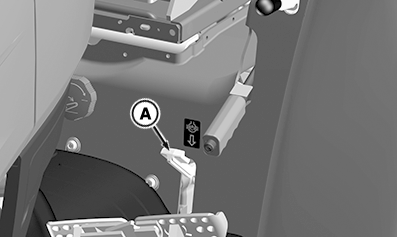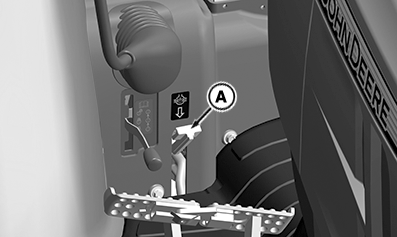Use Differential Lock (Traction Assist)
 Avoid injury! Driving at high speeds with the traction
assist engaged may result in loss of steering control. Do not engage
traction assist or turn with the traction assist engaged while operating
machine at high speeds or on slopes.
Avoid injury! Driving at high speeds with the traction
assist engaged may result in loss of steering control. Do not engage
traction assist or turn with the traction assist engaged while operating
machine at high speeds or on slopes.
The differential lock is used to provide better traction when rear wheels start to slip. Engaging differential lock will lock right and left rear axles together and cause both rear wheels to turn at equal speeds for maximum traction.
Avoid damage! Using the traction assist function improperly can damage the transaxle:
- Reduce speed and allow drive wheels to rotate at same speed before engaging or disengaging traction assist.
- Disengage traction assist when driving on dry asphalt or concrete.
- Use traction assist only when necessary for improved ground engagement.
Turning radius is increased when the differential lock is engaged.
Engaging Differential Lock
-
Stop or slow machine movement.
-
Differential lock will remain engaged as long as rear wheel slippage occurs. If tires slip and regain traction repeatedly, hold down pedal with foot so differential lock remains engaged.

LV28520-UN-19MAY17Hydrostatic Transmission Differential Lock

LV28521-UN-19MAY17PowrReverser Transmission Differential Lock
A - Differential Lock Lever
Depress differential lock lever (A) to engage differential lock.
Disengaging Differential Lock
Rear wheel slippage will keep differential lock engaged. Lock will automatically disengage when traction equalizes.
|
DB71512,000024B-19-20170525 |